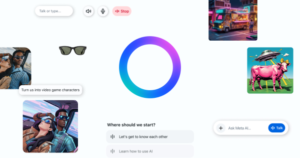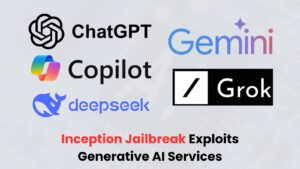Microsoft Introduces ‘Computer Use’ Automation in Copilot Studio

Microsoft Introduces ‘Computer Use’ Automation in Copilot Studio
Microsoft has unveiled an innovative feature called “Computer Use” as part of its Copilot Studio platform. This AI-powered tool enables virtual agents to interact directly with websites and desktop applications, mimicking human actions through simulated mouse clicks, menu selections, and text inputs.
Revolutionizing Intelligent Automation
Charles Lamanna, the corporate vice president of business and industry for Microsoft Copilot, stated that “Computer Use” is a significant advancement in Microsoft’s vision for intelligent automation. By allowing agents to engage with graphical user interfaces in a manner akin to human users, Microsoft aims to improve automation capabilities across various sectors.
According to Lamanna, the feature offers real-time adaptability: “Computer Use adjusts to changes in apps and websites automatically.” This means that the system can resolve issues independently, ensuring continuous workflow. Notably, the feature is supported by strong security protocols and governance frameworks to maintain compliance with industry and organizational standards.
Key Applications of ‘Computer Use’
The “Computer Use” feature has several practical applications, including:
- Automated Data Entry: Streamline data input across systems that do not have direct integration capabilities.
- Market Research Automation: Gather and organize information from various online sources efficiently.
- Invoice Processing: Enhance financial operations by automatically extracting and transferring data into accounting systems.
This automation feature operates on Microsoft’s robust infrastructure, eliminating the need for organizations to manage their own robotic process automation (RPA) environments. This development helps reduce overhead costs and maintenance demands.
Modernizing RPA with Natural Language Processing
Microsoft’s latest tool transforms traditional robotic process automation into a more resilient solution that is also easier to use. Users can describe automation tasks in straightforward language instead of needing extensive programming skills. Additionally, the platform allows for workflow refinement through side-by-side video previews, showing how the AI agent interprets and executes user interface actions.
Transparency is another focus of this new feature. Users can audit every action the agent undertakes, complete with screenshots and the reasoning behind each step. This feature not only aids in accountability but also enhances user trust in automation processes.
Microsoft’s Recall Feature Makes Headlines
In other news regarding Microsoft Copilot, the company has initiated the rollout of its Recall feature in Windows, as part of the latest Windows 11 preview build. This feature employs AI to search and retrieve past activities across apps, documents, and images by allowing users to describe what they remember.
How Recall Works
The Recall feature operates by taking optional snapshots of your screen throughout the day. To maintain security, it requires Windows Hello authentication for access, ensuring only authorized users can view their personal data.
This feature was first planned for rollout last June but faced delays due to community security concerns, prompting Microsoft to retract it initially. It was then rescheduled for release in October, only to face additional scrutiny when issues arose regarding potential capture of sensitive information, such as credit card details.
Microsoft has assured users that the Recall feature remains optional. You can disable it whenever desired. The company emphasizes that snapshots and related data are not shared with Microsoft or third parties, nor between different Windows users on the same device. Windows provides an option to manage these snapshots, allowing users to delete them, pause their operation, or turn them off entirely. Future updates that might enable data sharing will require explicit user consent, ensuring individuals retain control over their information.






